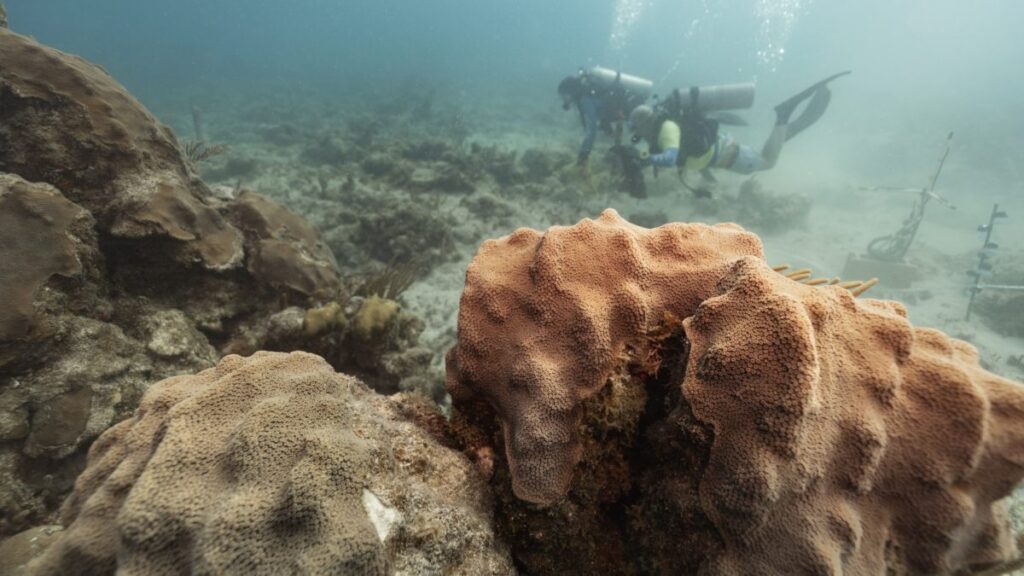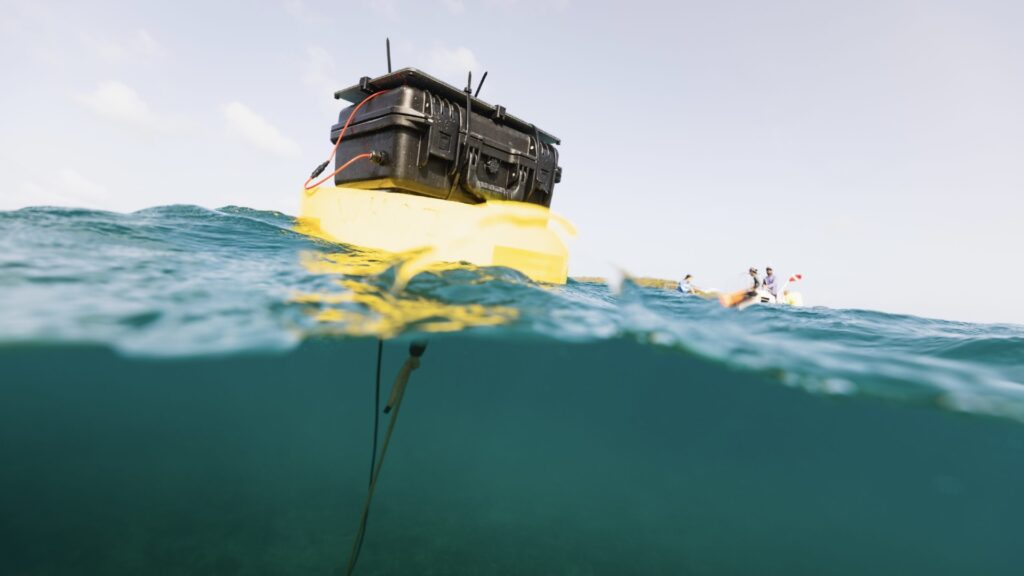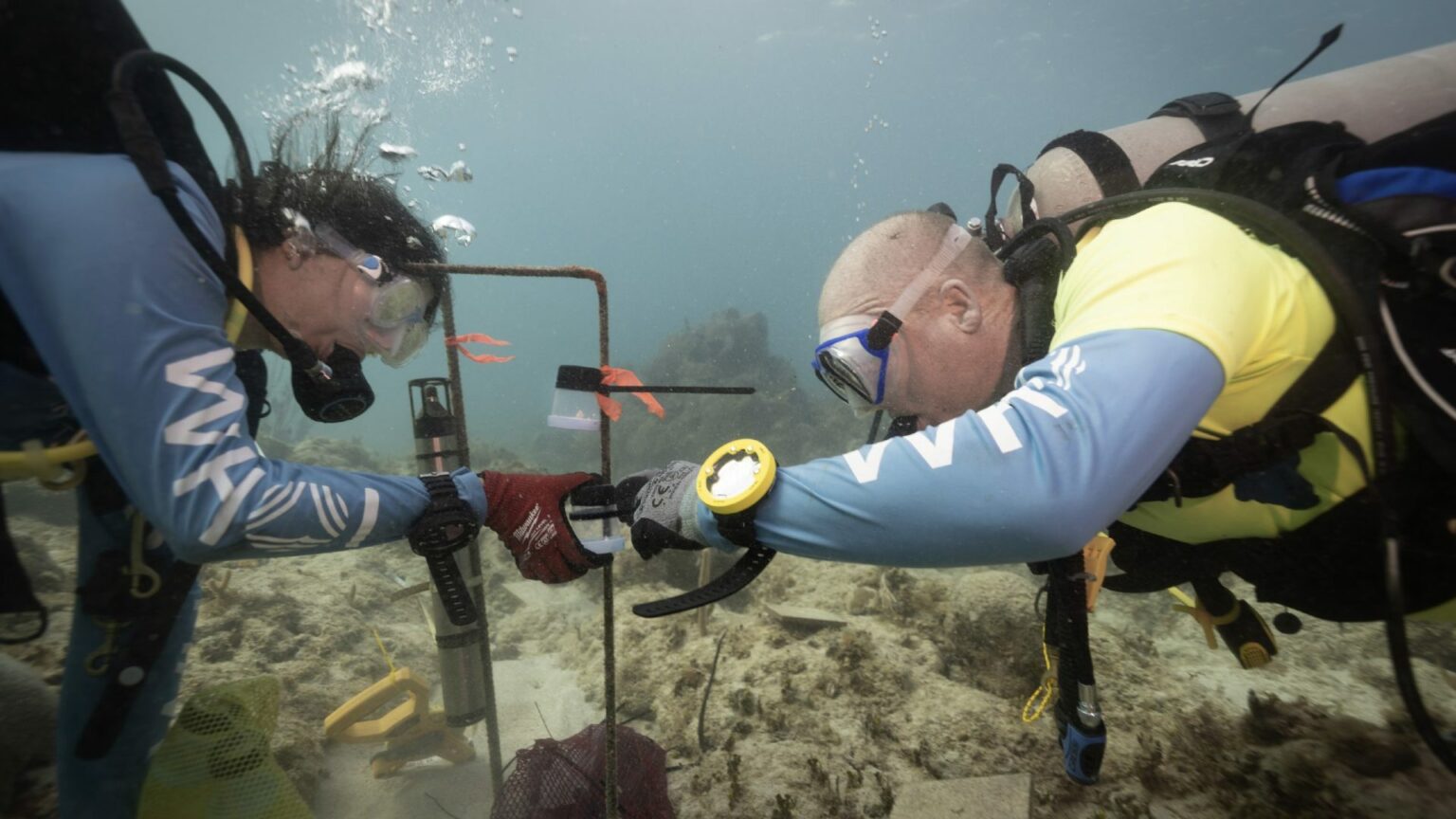Coral larvae use the “symphony of sounds” familiar to scuba divers on healthy reefs to help them decide where to live and grow, according to researchers at the USA’s Woods Hole Oceanographic Institution – and this knowledge could prove to be “one of the most scalable tools” to restore ailing reefs.
It isn’t a new theory but it had not been seen in action before. The WHOI has shown in a new study that broadcasting healthy reef sounds encourages coral larvae to recolonise reefs that have been damaged or degraded, whether by coral-bleaching, disease or direct human impacts.
Such reefs have a “much quieter, less rich soundscape” and are unable to support the same diversity of species. By replaying the “croaks, purrs and grunts of various fishes and the crackling of snapping shrimp” along with other biological activity, it seems that larvae will settle at significantly higher rates.
Corals’ larval stage, when they swim or drift on currents, is their only opportunity to select a suitable habitat before they settle for good on the seabed. While previous research had shown that chemical and light cues could also influence their decision, the WHOI team say that soundscape also plays a big role.

The institution is a private, non-profit organisation based at Cape Cod, Massachusetts, established in 1930 and dedicated to marine research, engineering and higher education.
Mustard hill coral
In 2022 WHOI scientists collected larvae from Porites astreoides, a hardy species also known as mustard hill coral, and distributed them in cups at three reefs along the southern coast of St John in the US Virgin Islands. One reef, Tektite, was relatively healthy, while Cocoloba and Salt Pond were degraded, with sparse coral cover and fewer fish.
Underwater speakers were installed at Salt Pond, with cups of larvae set 1, 5, 10, and 30m away from them. Healthy reef sounds recorded at Tektite in 2013 were played for three nights. Similar but soundless installations were set up at Tektite and Cocoloba.
Up to seven times more larvae were found to have settled in the cups at Salt Pond than on the other two reefs, averaging a rate 1.7 times higher than without the enriched sound environment. The highest settlement rates were 5m from the speakers, but even the cups 30m away attracted more larvae to Salt Pond than at Tektite and Cocoloba.
“The fact that settlement is consistently decreasing with distance from the speaker, when all else is kept constant, is particularly important because it shows that these changes are due to the added sound and not other factors,” commented marine biologist Aran Mooney, lead author of the study. “This gives us a new tool in the toolbox for potentially rebuilding a reef.”

Because Cocoloba was considered more degraded than Tektite, the researchers were surprised to find little difference between settlement rates at the two reefs.
Tektite had faced several hurricanes, a significant bleaching event, and an outbreak of coral disease in recent years. “It could be that conditions there are not as good as we thought they were, but we don’t know for sure,” said doctoral candidate Nadège Aoki, first author of the paper.
Excited about the potential
Half of all coral reefs are reckoned to have been lost in the past 30 years but the team now believe that enhanced soundscapes could now be used to increase settlement rates in coral nurseries, or be passively broadcast at reefs in the wild to maintain or improve existing coral populations.
“Replicating an acoustic environment is actually quite easy compared to replicating the reef chemical and microbial cues, which also play a role in where corals choose to settle,” said microbial ecologist Amy Apprill, a co-author.
“It appears to be one of the most scalable tools that can be applied to rebuild reefs, so we’re really excited about that potential.”
The study was supported by the Vere and Oceankind Foundations and the National Science Foundation and the WHOI’s findings have just been published in Royal Society Open Science.
Also read: What YOU can do to help coral reefs, Genetic Goldmine of Tough Corals, Mass Coral Breeding, Coral Reef Health








